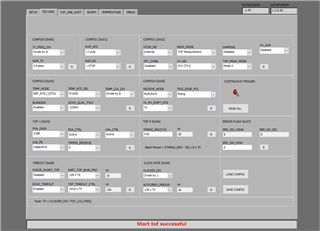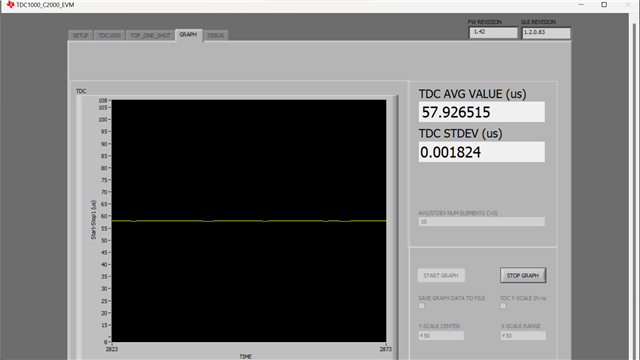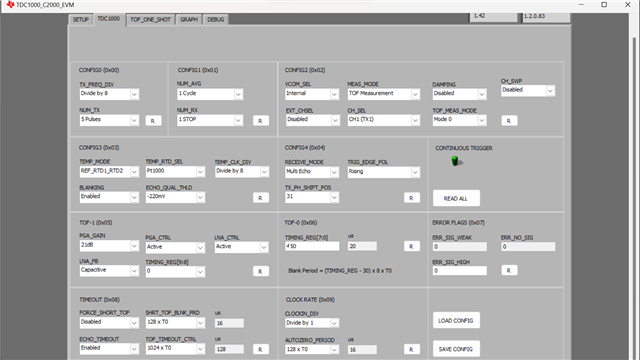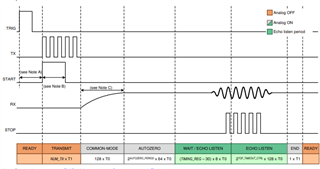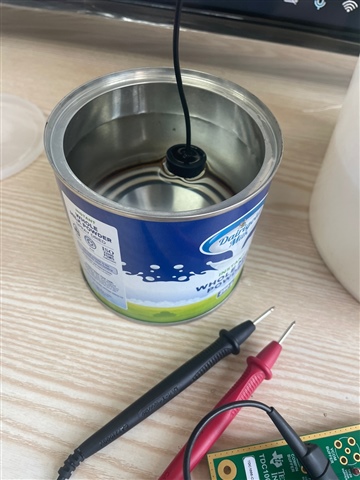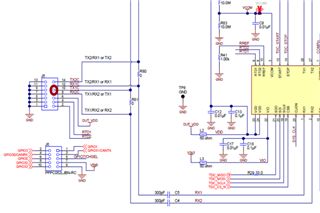Other Parts Discussed in Thread: TDC1000, TUSS4470
Tool/software:
Hello Isaac,
Thank you for your assistance. We mounted the transducer as you recommended and followed all the setup instructions.
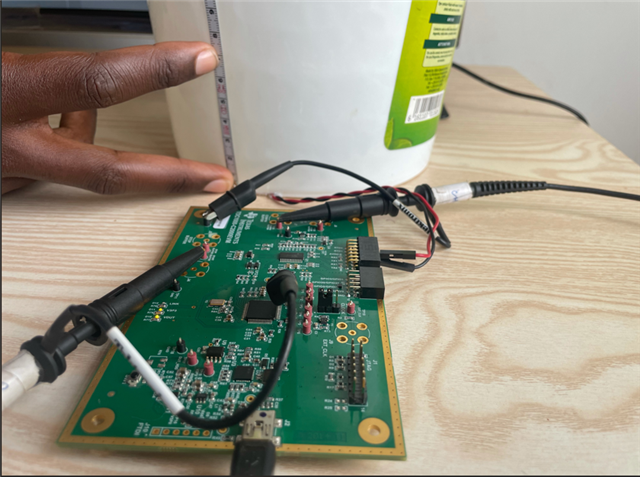
The transducer we are using is PSC1.0M014085H2AD2-B0 from Jiakang electronics (TI-Partner) Ultrasonic Flow Transducers-Transducers and Sensors-Products-Zhejiang Jiakang Electronics Co., Ltd. (jkelec.com)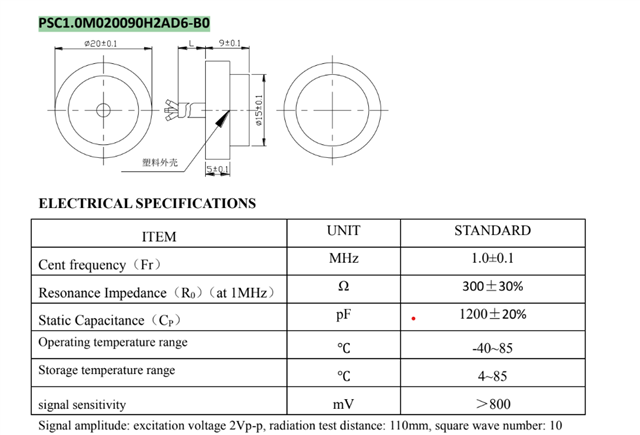
However, the GUI is showing us an incorrect yet constant TOF value which is 30.74us yet the water level is about 67mm (TOF = 90.29us).
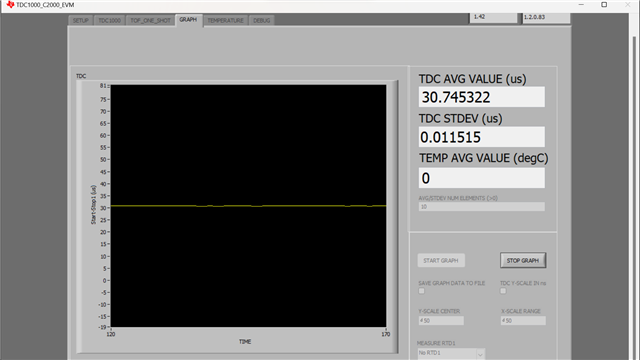
The Start Pulse is connected to channel 1 and the Compin Buffer is connected to Channel 2 of the oscilloscope in order to view the timing between the Start pulse and the Echo for the stop pulse generation.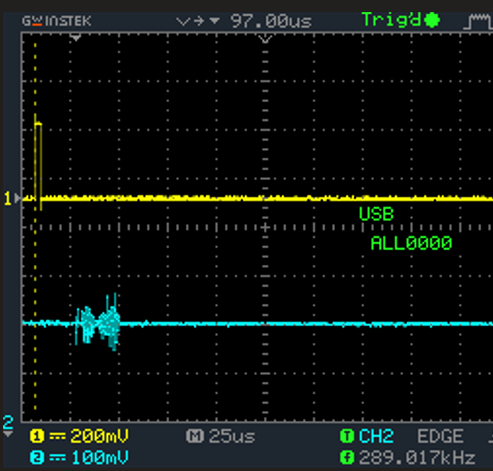
We used the following register settings 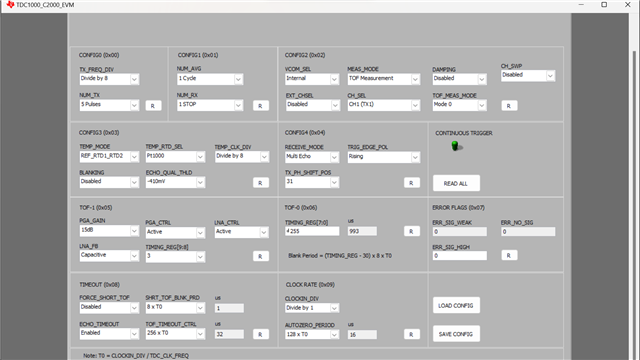
Kindly advise on the register settings we should use, and how we can get the actual TOF reading which should also vary with change in water level.
Thank you.



